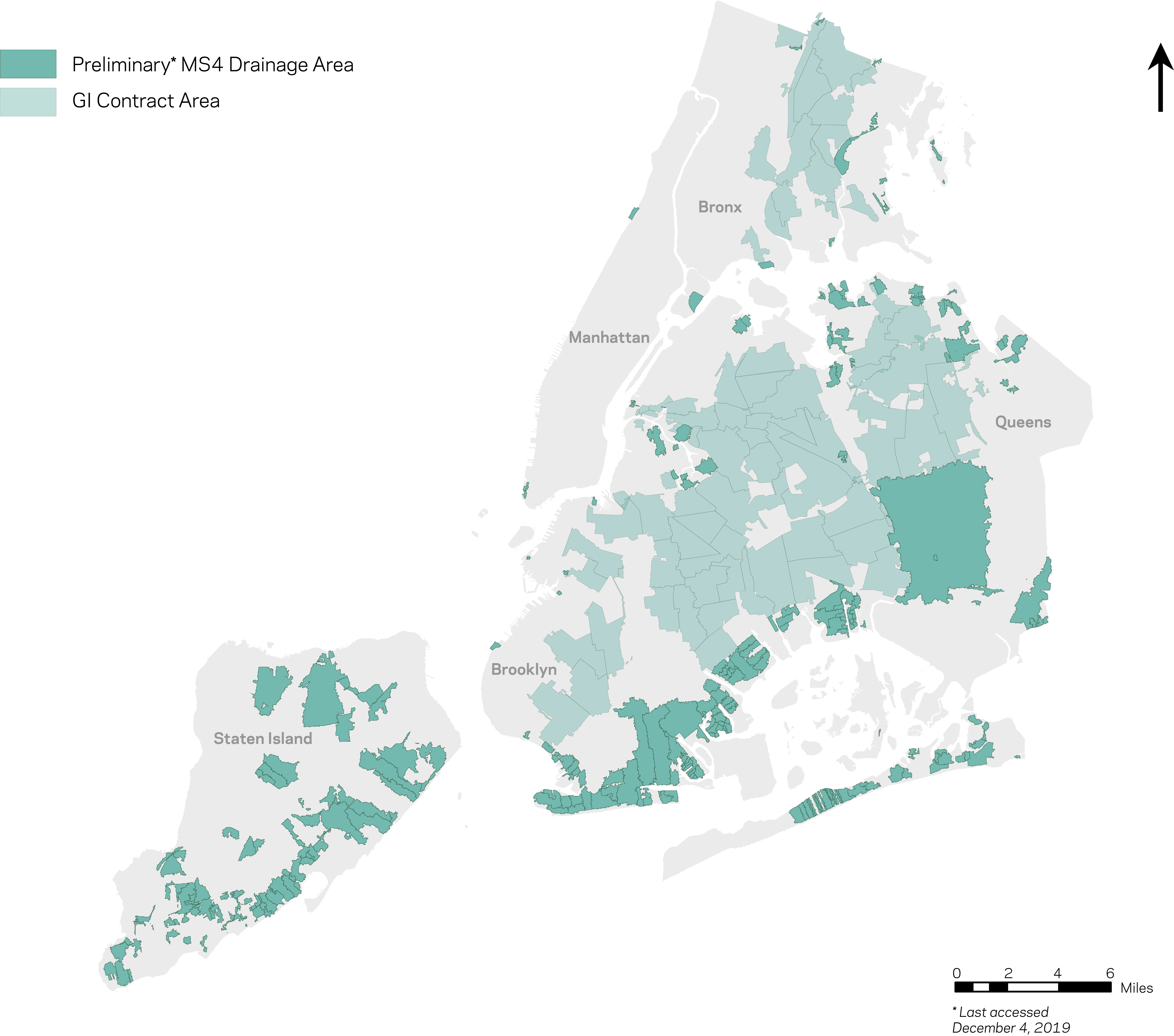Stormwater management is necessary to reduce combined sewer overflow (CSO) in combined sewer areas of the city and reduce pollution in waterways in the municipal separate storm sewer system (MS4) areas of the city. New York City manages stormwater through “gray” infrastructure including tanks and pipes or “green” infrastructure (GI) practices which mimic the way the natural environment handles stormwater. GI practices typically manage stormwater via infiltration through soil and evaporation through vegetation. GI practices can also provide co-benefits such as reduced flooding, improved air quality, attractive streetscapes, traffic calming, and more.
Using natural components, such as plants, stones, and soils, to mitigate the impacts of stormwater runoff is an ecologically responsible and economical technique to employ within the public ROW. DEP, together with DOT, Parks, and DDC, developed standardized designs and protocols to site GI practices within the public ROW. These standards along with other helpful guidance can be found on DEP's Green Infrastructure web page.
The following sections describe specific city-led strategies for managing stormwater in targeted areas that have the greatest need. These practices will be built and maintained by the city within priority areas of combined- (CSO) and separately-sewered (MS4) areas.
The city will site the appropriate standard treatment based on visible site conditions (grading, location of catch basins, tributary drainage area, pedestrian volumes, built fabric context) as well as subsurface conditions (permeability, site contamination, water table, etc.).
Private entities or community groups are also encouraged to build green infrastructure, but those installations will require a maintenance agreement. Private entities may choose to build standard stormwater management practices or to pursue unique installations. Treatments other than city standards will require more intensive review, but are still encouraged.

Find maps showing preliminary MS4 Drainage and GI Contract Areas on the DEP website (Credit: DEP)
Sidewalk Stormwater Management Practices
The most common type of Stormwater Management Practice is typically a planted area located along the curb of a sidewalk, graded to capture stormwater, and planted with an understory of shrubs and herbaceous material, and sometimes trees. Inlet structures such as curb cuts and grates allow for stormwater from the adjacent roadway to enter the planted area and overflow to exit.
Stormwater Greenstreet
Another common Stormwater Management Practice, a Stormwater Greenstreet, is a planted area within the sidewalk or roadway, which extends beyond the standard street geometry, and collects and treats stormwater runoff. Stormwater Greenstreets are typically larger stormwater management practices installed and maintained by DEP, Parks, or another committed maintenance partner. They can be located anywhere in the city as conditions allow.
Median Stormwater Management Practices
Similar to DEP Rain Gardens and Stormwater Greenstreets, Median Stormwater Practices are installed within a median of a street.

